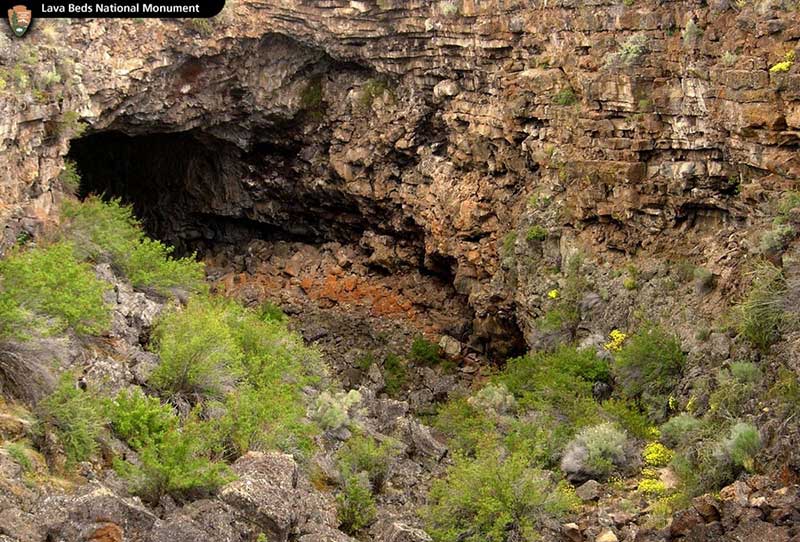It was cool days and cold nights when we arrived two days ago, but that has been replaced with hot days and cool nights. So, Twig and I used the morning to take an ambling walk around what is called Cave Loop, probably three miles or so. Most of the trails will be closed for another couple of weeks so we walk along roadways that aren’t heavily driven. I was perplexed at the continued closures, but a Ranger made sense of it—vegetative cover is slowly returning and since no one sticks slavishly to a trail they keep them closed to protect young grasses, forbs, and shrubs slowly making their return (against the odds, I imagine, since it’s so dry); wandering hikers do more damage than we realize in normal conditions, and this is a delicate time for the plants whose home this is. So, we stuck to the road except in unburned areas. Fires, like tornados back in the Texas Panhandle where I grew up fearing them, are famous for doing great damage in one spot while ignoring one beside it. Tornados have been known to destroy a house but leave a meal on the table. Fire will burn an area but leave a tree here and an island there or a hillside unscathed. It dances to the winds and whither they goest, it will follow. There is much of mystery to see. In some areas, those with heavy groundcover, it’s easy to picture how the fire moved across the land burning everything as it went. In others where the grass and sage and such were thinner, it’s not so easy. Strong winds, presumably, flinging embers forward. How does one half of a thirty-foot tree burn and the other appear unbothered? The more closely I look the more I see that the desolation of nine months ago has been healed at ground level, but skeletons of incinerated juniper, sage, pine, and bushes stand around as reminders and can easily dominate one’s perspective; they are not pretty sights. Surfaces also appear grimmer owing to removal of vegetation leaving dark lava more exposed. I wonder if sage and its cohorts will have a hard time recovering; while grasses, forbs, and wildflowers are doing well, I don’t see signs of the others’ return. I was inspired when I was here shortly after the fire to see green sprigs arising from blackened roots, but they don’t seem to have come to anything. Maybe too early or too dry or just a last gasp; also, as regrowth signs were so sparse, they would have been irresistible to mice and deer. Whenever I pay attention, I see new signs of my ignorance everywhere. Fire science, botany, geology, wildlife biology…so much more is unknown than known to me. Reading to remedy that is one good way to spend the better part of a life, and there was a time when it was more important than now. I honor that way and at times like this miss it, but not with sufficient motivation to change. Thoreau was still identifying and classifying, writing, and organizing his copious notes until practically the moment he died, but he was only in his mid-forties. Muir lived much longer but over the last decades of his life his approach to Nature was less strenuous that when younger. My involvement feels deeper than ever but different in that it too has become less demanding while turning more to the beauty and spirit of the places I go. The balanced has shifted.
Hardy little wildflowers have appeared, and one could imagine them oblivious to what happened while they lay dormant, but I’d bet not. Indian Paintbrush, ubiquitous at all elevations and diverse habitats throughout the West it has seemed to me as I hiked them, have shown up here but not in abundance. Except for the red Paintbrush, yellow and purple are the exclusive colors, except for the lovely white interior of one plant’s dime-sized purple blossoms and a pink flower I saw later. I counted three species of purple and about the same of yellow. It must be late in the season for all these guys. The burn has motivated me toward a more observant trek than usual, which I’m pleased about. Would that I could always be so attentive. I noticed how diverse the forms taken by lava as it spread itself around all those years ago. There are largish heaps occasionally and then narrow strands winding across the land and then small piles and, most of all, solitary chunks scattered about, not to mention collapsed caves of remnant sluices where the viscous currents wound beneath the surface back during the volcanic periods, rising from well below, and then in time the ground above falling into the emptied space. The Monument is characterized by dozens of these things that did not collapse and where bats find homes and visitors wander and wonder. Although I’ve entered several of these caves, I’m not really drawn to them, much preferring illumination to darkness. (If I continue this metaphor I’ll have to deal with the evident analogue: do I prefer surfaces to depth? Better remain literal.) All things considered, a comeback from the fire is well underway, and I’m sure it would greatly appreciate a few heavy rains to boost it along. No one can resist the pull of spring under any circumstances, but when it comes as rebirth after affliction everything counts, everything is a benediction. Speaking of which, I didn’t mention that whatever shape the lava piles take, all are being colonized by growth: grasses, shrubs, sometimes trees. Brave seeds that decided to accept a challenge.
Photo from Lava Beds National Monument Park Service


